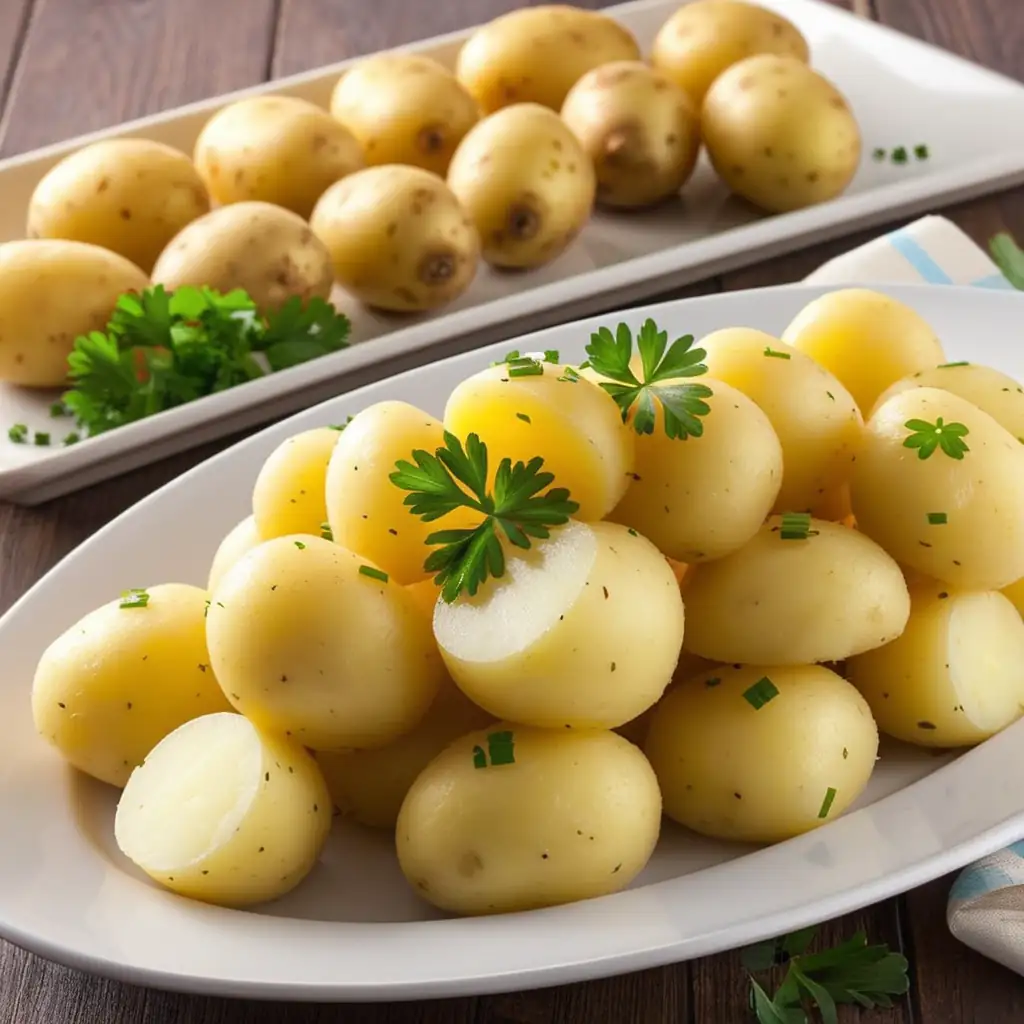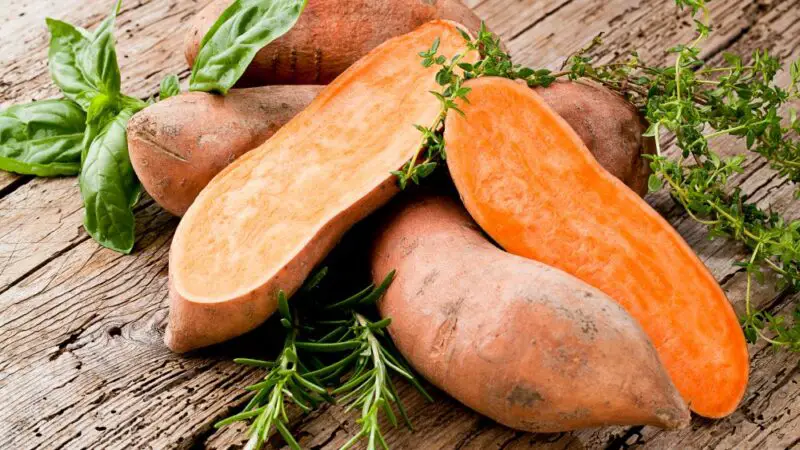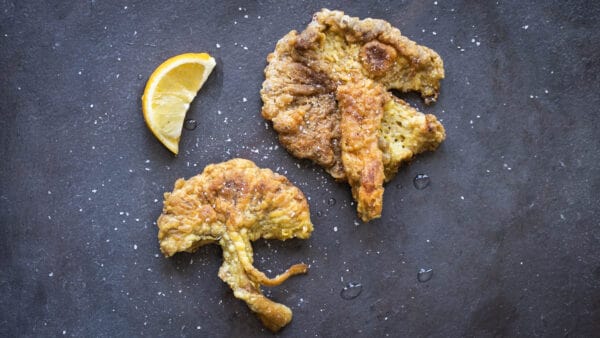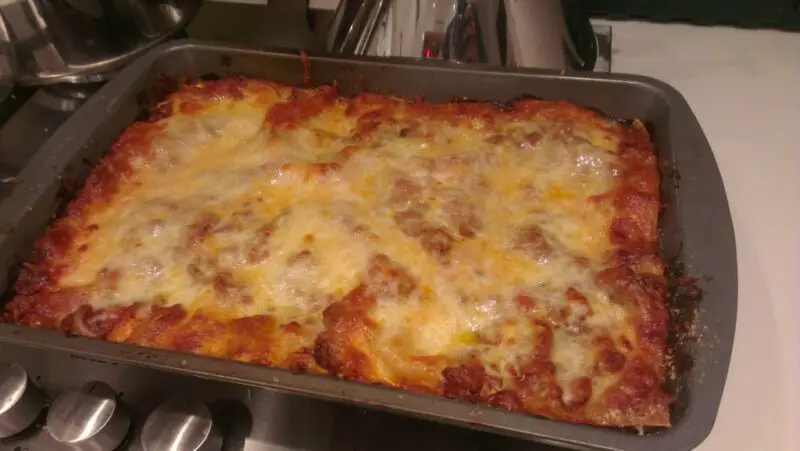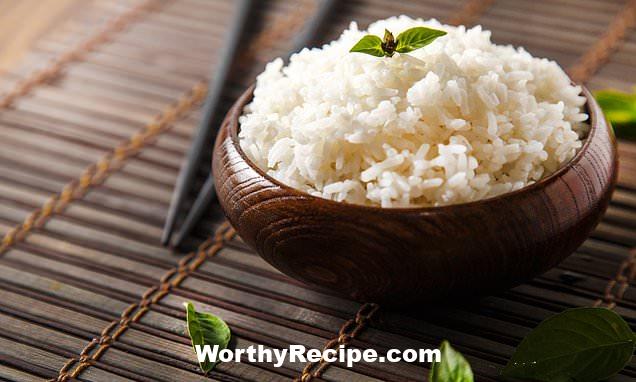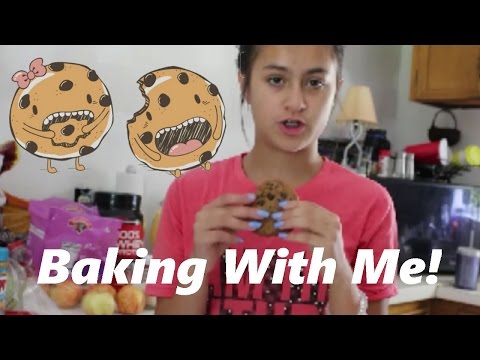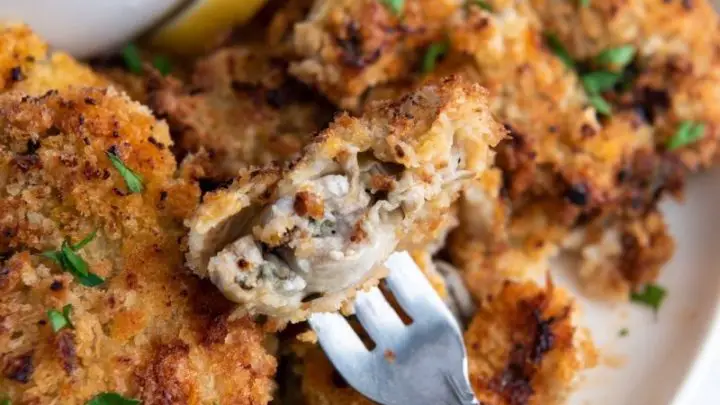Frozen potatoes are an unsung hero of the kitchen. Keeping a bag in the freezer means you’re never more than minutes away from homemade fries, mashed potatoes, or a hearty potato-based skillet. But cooking frozen spuds can be tricky – watery, mushy, underdone potatoes are disappointingly common results.
This guide will walk you through everything you need to know to cook frozen potatoes like a pro. You’ll learn how different cooking methods impact texture, how to optimize crispness and creaminess, and how to adapt recipes to use frozen potatoes. With the techniques here, you’ll turn out tasty potato dishes on even the busiest weeknights.
A Brief History of Frozen Potatoes
People have been freezing potatoes since the early 20th century, not long after Clarence Birdseye invented flash freezing in 1925. Early frozen potato products were sold to institutions like hospitals and the military. Retail sales of frozen french fries began in the 1940s, with other frozen potato products following over the next decades.
Sales of frozen potatoes, especially fries, really took off in the 1970s thanks to fast food chains like McDonald’s. Today, Americans eat an average of 114 pounds of frozen potatoes per person per year!
While frozen fries and tater tots may be the most popular frozen potato products today, you can also find diced, sliced, and shredded frozen potatoes. These more versatile potato cuts have opened up all kinds of possibilities for home cooking.
Benefits of Cooking with Frozen Potatoes
Cooking with frozen potatoes offers several advantages:
Convenience – No peeling, chopping, or parboiling required. Frozen potatoes are ready to cook as-is, saving lots of prep time.
Long shelf life – Properly stored, frozen potatoes can be kept for months in the freezer. Fresh potatoes last just weeks.
Consistent quality – The freezing process halts the aging process. Frozen potatoes have reliably good texture and flavor.
Reduced food waste – Cook just the amount you need and save the rest for later. No more forgotten spuds growing eyes and sprouts in the pantry.
Year-round availability – Frozen potatoes give you access to favorite dishes regardless of season or region. Enjoy potato salads and soups even when fresh potatoes are out of season.
Nutritional value – Flash freezing preserves most vitamins and minerals. Frozen potatoes have nearly the same nutrition profile as fresh.
With a bit of care when cooking, frozen potatoes can deliver excellent results in terms of flavor, texture, and ease of preparation.
How Freezing Changes Potato Texture
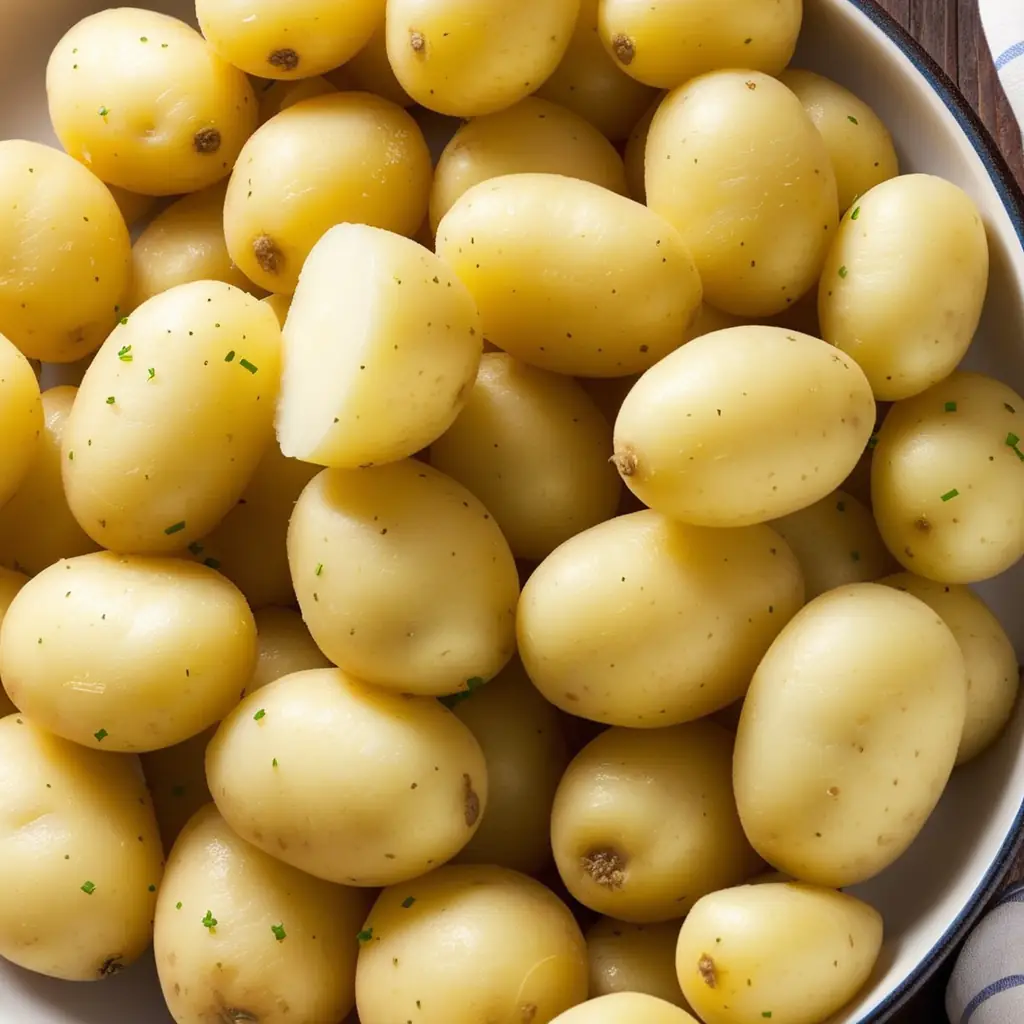
To understand how to cook frozen potatoes, it helps to know what effect freezing has on a potato’s structure.
Fresh potato flesh consists of densely packed starch granules suspended in water. The starch granules give the potato its characteristic fluffy yet substantial texture when cooked.
Freezing causes water inside the potato cells to expand, rupturing cell walls. This bursting action physically separates the starch granules from each other.
Thawing further deteriorates cell structure. Starch leaches out of the damaged cells and disperses into the surrounding water.
This breakdown results in frozen potatoes absorbing more water during cooking. The starch also gelatinizes at a lower temperature compared to fresh potatoes, causing them to soften faster.
Accounting for these textural changes is the key to successfully cooking frozen potatoes. Choosing the right techniques can mitigate undesirable mushiness.
Matching Cooking Methods to Desired Texture
Frozen potatoes lend themselves best to certain cooking methods depending on the texture you want to achieve:
For crispy/crunchy potatoes: Bake, pan fry, or deep fry. Higher heat coupled with little or no moisture ensures a crispy exterior.
For creamy/fluffy potatoes: Boil, steam, or microwave. Gentler moist cooking preserves interior fluffiness.
For tender yet intact potatoes: Roast or sauté. Moderate heat in some fat keeps potatoes from falling apart.
Of course, texture preferences are highly personal. Some love crispy roasted potatoes while others favor soft, creamy mashed potatoes. Cooking methods should be selected based on the type of dish and individual tastes.
The rest of this guide will go into detail on how to tailor each cooking technique to get picture-perfect frozen potatoes every time.
Baking Frozen Potatoes
The dry heat of the oven is ideal for achieving a crispy, golden exterior on frozen potato chunks. French fries, potato wedges, diced potatoes, and tater tots all shine when baked.
Tips for Crispy Oven-Baked Frozen Potatoes:
- Use a baking sheet – The increased surface area speeds cooking and evaporation for crisper potatoes.
- Allow space between pieces – Avoid crowding so air can circulate and moisture can escape.
- Coat with oil – A thin layer of oil helps facilitate browning.
- Flip potatoes halfway – Ensures even browning by exposing all sides to hot air.
- Cook at high heat – Temperatures between 425-475°F are best for crisping.
- Uncover during cooking – This allows moisture to evaporate for a crisper finish.
- Season just before serving – Salt draws out moisture, so season after cooking.
Baked frozen fries rival deep fried with these easy steps:
- Toss frozen fries with just enough oil to lightly coat.
- Spread in a single layer on a baking sheet.
- Bake at 450°F for 15 minutes.
- Flip fries and bake 10 more minutes.
- Sprinkle with salt and enjoy!
[Table] Baking Times and Temperatures for Frozen Potatoes
| Cut | Time | Temperature |
|---|---|---|
| French fries | 25-30 min | 450°F |
| Wedges or cubes | 35-40 min | 425°F |
| Tater tots | 15-20 min | 475°F |
| Diced potatoes | 25-35 min | 450°F |
Feel free to toss frozen potatoes with seasonings like garlic powder, paprika, or dried herbs before baking. But avoid fresh herbs and salt until after baking for best results.
Pan Frying Frozen Potatoes
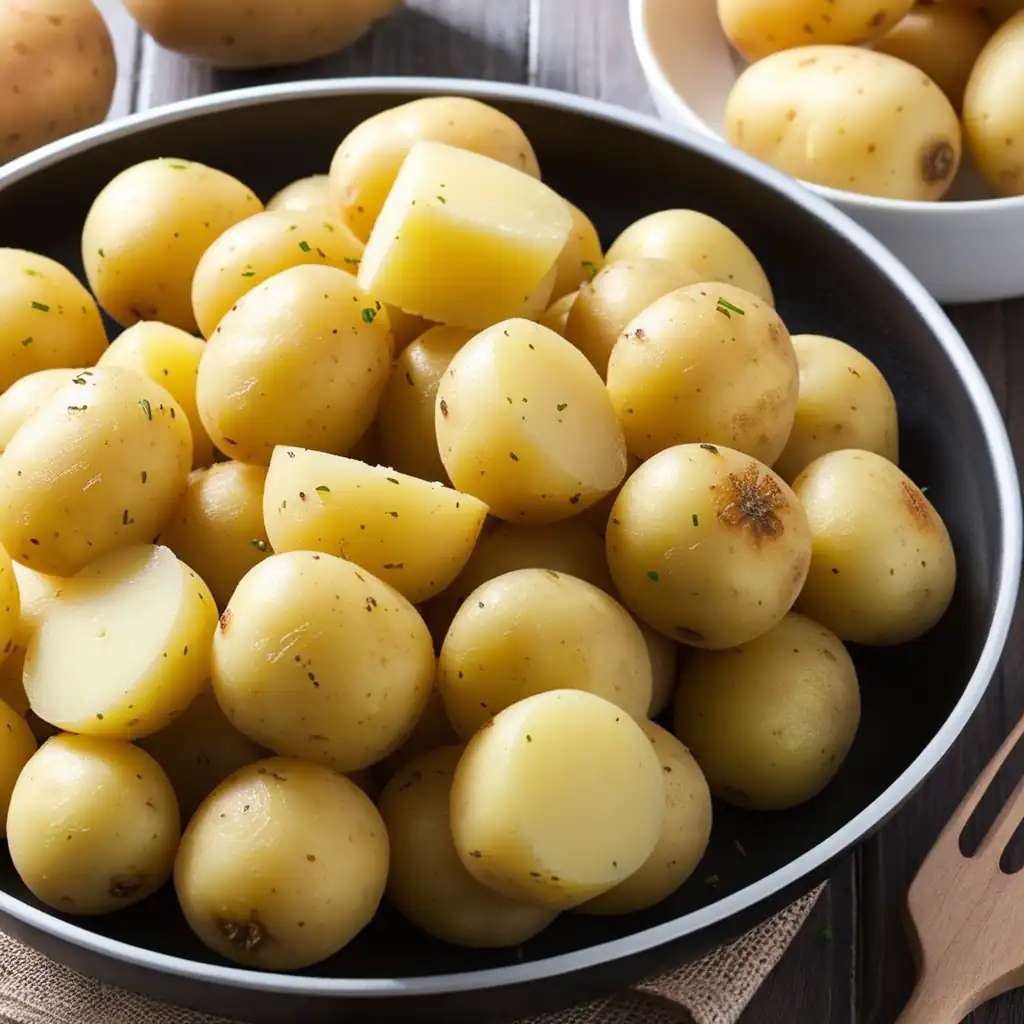
Pan frying is ideal for getting a crisp crust on frozen potato slices or smaller pieces while keeping the interior tender. Hash browns, home fries, and potato pancakes all benefit from some time in a hot skillet.
Tips for Perfect Pan-Fried Frozen Potatoes:
- Use a heavy, non-stick pan – These conduct heat evenly to avoid sticking and hot spots.
- Keep pieces small – Larger potato chunks won’t cook through before burning.
- Get pan and oil hot – This helps sear and brown potatoes instead of steaming them.
- Don’t crowd the pan – Again, space is needed for optimum browning. Cook in batches if needed.
- Stir occasionally – Ensures all sides get evenly browned.
- Press down on potatoes – Flattening patties and pancakes maximizes crispy surface area.
This easy skillet hash starts crispy and ends creamy:
- Heat 1 Tbsp oil in a non-stick skillet over medium-high heat.
- Add frozen shredded potatoes. Press down firmly into an even layer.
- Cook 6-8 minutes until golden brown on the bottom.
- Flip and press into an even layer again. Cook 5-7 minutes more until browned and heated through.
- Season with salt and pepper. Serve immediately.
Pan frying is also perfect for getting potato pancakes, like latkes or boxty, nice and crispy. Simply shape thawed shredded potatoes into patties and fry on each side for 3-4 minutes until deep golden brown.
Deep Frying Frozen Potatoes
Nothing crisps up a frozen fry quite like submerging it in hot oil. Deep frying is the go-to for restaurant-quality frozen french fries and tater tots.
Tips for Deep Frying Frozen Potatoes:
- Use a heavy pot with high sides – This prevents boilovers.
- Heat oil to 350-375°F – Colder oil absorbs too much; hotter risks scorching.
- Fry in batches – Avoid crowding so oil maintains temperature.
- Blot fried potatoes – Removes excess surface oil.
- Season while hot – Salt and spices stick best right after frying.
Transform regular old frozen fries with these easy steps:
- Heat 3 inches oil in a heavy pot or Dutch oven to 375°F.
- Fry fries in small batches 4-5 minutes until golden brown.
- Drain on paper towels and immediately sprinkle with salt.
- Eat piping hot!
If you don’t have a deep fry thermometer, test the oil by adding one fry. If it bubbles and sizzles vigorously, the oil is ready.
While deep frying makes the crispiest frozen potatoes, it does require more oil and effort compared to baking. For a healthier version, try oven “frying”:
- Toss fries or tots with 1-2 Tbsp oil.
- Arrange in a single layer on a wire rack set over a baking sheet.
- Bake at 450°F, flipping once, until crispy and browned, about 20 minutes.
The elevated rack allows air flow all around for maximum crispness.
Roasting Frozen Potatoes
Crisp yet tender roasted potatoes are easy to accomplish with frozen spuds. The dry, radiant heat of the oven gently steams the interiors while crisping the surfaces.
Tips for Roasted Frozen Potato Perfection:
- Cut potatoes into even sized pieces – Promotes uniform cooking.
- Toss with oil – A teaspoon per potato is plenty.
- Use a shallow roasting pan – More surface area exposed to hot air.
- Start covered, finish uncovered – Retains moisture at first then finishes crispy.
- Stir potatoes halfway – Ensures even browning.
- Season with herbs and spices – These flavors concentrate beautifully when roasted.
Frozen diced potatoes transform into roasted root veggie perfection:
- Toss frozen diced potatoes with oil, rosemary, garlic, salt and pepper.
- Roast covered 30 minutes in a 400°F oven.
- Uncover and roast 15 more minutes, stirring once, until crisped and browned.
For extra crispy roasted potatoes, coat the prepped spuds with a thin layer of seasoned cornstarch before roasting. The coating helps draw out even more moisture.
Sautéing Frozen Potatoes
Sautéing frozen potatoes on the stovetop is a quick route to browned, crispy potatoes. The moderate heat crisps without overcooking.
Tips for Sautéing Frozen Potatoes
- Use a heavy skillet or saucepan – Distributes heat evenly.
- Heat oil before adding potatoes – Prevents sticking and steaming.
- Cook over medium-high – High heat risks scorching; low steams instead of browning.
- Stir frequently – Ensures even cooking on all sides.
- Cook uncovered – Allows moisture to evaporate.
- Finish with herbs and spices – Fresh herbs wilt beautifully when stirred in at the end.
This simple sautéed potato recipe goes from fridge to plate in under 30 minutes:
- Heat 1-2 Tbsp oil in a skillet over medium high heat.
- Add diced frozen potatoes. Cook 8-10 minutes, stirring occasionally until browned.
- Stir in fresh thyme and sage. Cook 1 minute more until fragrant.
- Season with salt and pepper. Serve warm.
Potato wedges also sauté up nicely. Just add them flat-side down to get a crispy, browned surface before turning.
Boiling Frozen Potatoes
Gently boiling frozen potatoes is an easy route to tender, creamy spuds ready for mashing, potato salad, or simply eating whole.
Tips for Boiling Frozen Potatoes
- Start in cold water – This reduces splitting or “blow outs” from extreme temperature shifts.
- Don’t overcrowd – Room for water circulation ensures even cooking.
- Simmer gently – High heat risks mushy, waterlogged potatoes.
- Check doneness frequently – Frozen potatoes cook faster than fresh.
- Drain immediately – This stops carryover cooking for optimally fluffy potatoes.
Perfect creamy mashed potatoes start with this easy boiling method:
- Place diced frozen potatoes in a pot and cover with cold water by 1 inch.
- Bring to a gentle simmer over medium heat. Cook 10-15 minutes until tender when pierced.
- Drain potatoes and return to pot. Mash with milk, butter, and seasonings until smooth and creamy.
Russet potatoes work best for fluffy mashed potatoes. Waxy red or gold potatoes hold their shape better if you want chunks of potatoes.
When boiling whole baby potatoes, start checking doneness after 10 minutes. Use a skewer or paring knife to test – it should slide in easily when they’re ready.
Steaming Frozen Potatoes
Like boiling, steaming cooks frozen potatoes through gently to yield creamy, fork-tender spuds. Steaming has a few advantages though:
- Requires less water
- Preserves more nutrients
- Provides fluffier, drier potatoes
Follow these tips for steaming success:
- Use a steamer basket – Keep potatoes above the simmering water.
- Spread in an even layer – Discourages uneven cooking.
- Steam covered – Traps moisture to prevent drying out.
- Check doneness early – Begin testing at 10 minutes.
- Remove immediately – Prevents overcooking with residual heat.
Steam diced or quartered frozen potatoes just until tender:
- Place potatoes in a steamer basket over 1 inch simmering water.
- Steam covered 10-15 minutes until just tender when poked with a fork.
- Transfer immediately to a bowl and season as desired.
Steaming is great for getting potatoes ready to smash for gnocchi or champ. The drier potatoes yield lighter doughs and doughier mashes.
Microwaving Frozen Potatoes
The microwave provides a fast, convenient way to cook frozen potatoes when time is short. While they won’t brown, microwaved spuds cook quickly and evenly.
Tips for Microwaving Frozen Potatoes
- Cover with a lid or vented plastic wrap – Retains moisture; prevents drying out.
- Microwave in 4-5 minute bursts – Check doneness frequently to prevent overcooking.
- Stir or flip potatoes halfway – Ensures even heating.
- Allow to rest 2-3 minutes after cooking – Lets moisture redistribute for fluffier potatoes.
- Season and stir to coat – This adds flavor to the hot surface that forms inside the microwave.
Microwave cubed frozen potatoes in just 10 minutes:
- Place potatoes in a microwave-safe dish. Cover with vented plastic wrap.
- Microwave on high 5 minutes. Stir potatoes, re-cover, and microwave 4 more minutes.
- Let rest 3 minutes before serving. Season and stir to coat.
Note that microwaved potatoes won’t brown. Combining methods can help add crispy texture. Par-cook in the microwave then finish in a hot skillet or under the broiler.
Adapting Recipes for Frozen Potatoes
With a few adjustments, you can use frozen potatoes in place of fresh in most recipes with great results. Here are some substitutions to keep in mind:
- Reduce cooking water 15-25% – Frozen potatoes absorb more liquid.
- Lower cooking temperature 25°F – Frozen spuds are more delicate.
- Reduce cooking time 10-25% – They also cook faster than fresh.
- Add fat/oil – Helps facilitate browning and crisping.
- Increase seasoning – Frozen potatoes absorb more, needing extra flavor.
With these tweaks, soups, stews, casseroles, and more all work beautifully with frozen potatoes. You save time without sacrificing quality!
Storing and Handling Frozen Potatoes
To enjoy frozen potatoes at their best quality, follow these storage and handling guidelines:
- Store unopened at 0°F or below.
- Once opened, reseal tightly and use within 3-4 months.
- Avoid freezer burn by keeping potatoes covered in the package or an airtight container.
- When cooking, don’t allow potatoes to thaw before adding to the pan or pot.
- Rinse just before using to remove excess starch.
- Pat dry thoroughly before roasting or pan/deep frying. Excess moisture decreases browning.
Follow these simple practices, and your frozen potatoes will cook up tender and tasty every time.
The Takeaway
With their convenience, versatility, and long shelf life, frozen potatoes are invaluable kitchen staples. Learning the keys to maximizing texture makes it easy to turn them into crispy fries, fluffy mashers, and everything in between – no peeling required!
Whether you need a quick weeknight side or want to simplify holiday prep, frozen potatoes have you covered. Master the techniques here, and you’ll never look at the freezer aisle the same way again.
